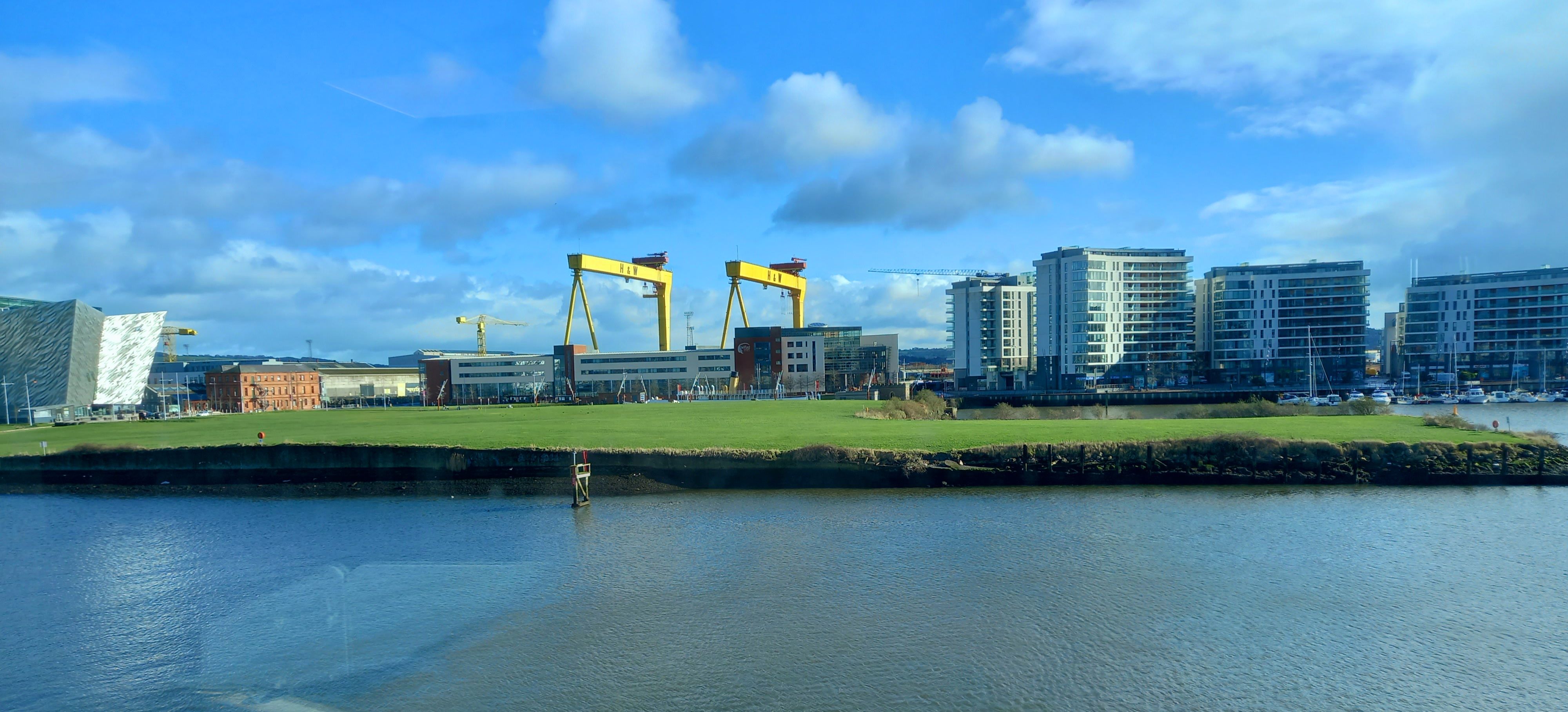THAT huge expanse of land in front of Titanic Belfast hides a secret that not many people are aware of.
Because it’s here, underfoot, that Blitzed Belfast rests.
And where the water meets the land, you can actually see the brown clay bricks breaking the surface, the remains of hundreds of homes destroyed in the Second World War.
Some older locals say it was to here that an endless trail of lorries dumped their cargo in the early 1940s, so much so that the water was soon replaced by land.
Dúlra could well believe it – an incredible 7,000 homes were destroyed or badly damaged in four Luftwaffe raids in early 1941 which killed 900 people.
Dúlra’s mother still recalls it like it was yesterday, being evacuated from Clondara Street into the Bog Meadows during some attacks, and another time watching from Whiteabby Hospital as bombs dropped into Belfast Lough near the shipyard.
Dúlra always laughs at one of her recollections which political historians might find enlightening about how some nationalists viewed the new northern state. As she was making her way to the Bog Meadows, a neighbour who had a few too many stood out in the middle of Clondara Street and screamed at the bombers overhead: “‘Bomb the bastards, bomb the bastards!” as he waved them in the direction of the shipyard!
Dúlra loves dandering down at docks, particular at this time of year. Our mountaintops and hillsides are like scorched earth in winter as arctic winds tear across them. The docks, meanwhile, become a sheltered haven.
But he can’t help but mourn the absence of any sort of obvious wildlife strategy. This vast green area in front of the Titanic Building – once earmarked for a new Japanese hotel – is like a desert to wildlife. If only the lawnmower was locked up, it would quickly flourish and be a major wildlife attraction bordering the lough. Can it not be given to wildlife at least until construction is confirmed? It would surely enhance the experience of the thousands of visitors to the Titanic Building to see and hear waders and sedge warblers and buzzards right outside.
This week Dúlra had his eye on another bird, a spectacular bird that happens to be taking refuge in the calm water beside the Odyssey. The pair of great northern divers – lóma mór in Irish – are well worth travelling to see. Frogspawn at the Titanic Belfast site
Black, sleek, yet powerfully built, divers aren't like any other duck. They’re like the Ferrari of the bird world, slick and aerodynamic. Dúlra watched as they effortlessly disappeared under the water just yards from where people were enjoying a lunchtime stroll past the Odyssey. And he counted until they resurfaced: 50 seconds. These birds can actually dive 200 feet if needed.
The live in the Arctic Circle, Greenland and Iceland. They only come to Ireland in winter and have never bred here. It’s hard to believe that this hardy bird thinks we’re too hot.
Dúlra wasn’t here for the divers, however, but for something that these birds would think of as a delicacy – frogspawn.

The garden sink has remained empty of amphibian visitors but Valentine’s week is when our millions of hidden frogs get the mysterious call to emerge their hiding places among the vegetation to breed.
There’s plenty of damp land around the docks that in the past Dúlra has found spawn in – the frogs often just lay the spawn in a puddle on the road where their offspring are doomed.
And it wasn’t long until he found what he was looking for, perhaps Belfast’s first spawn, hundreds of black baby frogs held inside their translucent ‘eggs’. These had been laid in a healthy puddle, so there was no need to rehouse them to the garden sink that's been prepared just for them.
He's hoping that, in the next few days, he'll have his own babies to look after.
If you’ve seen or photographed anything interesting, or have any nature questions, you can text Dúlra on 07801 414804.








